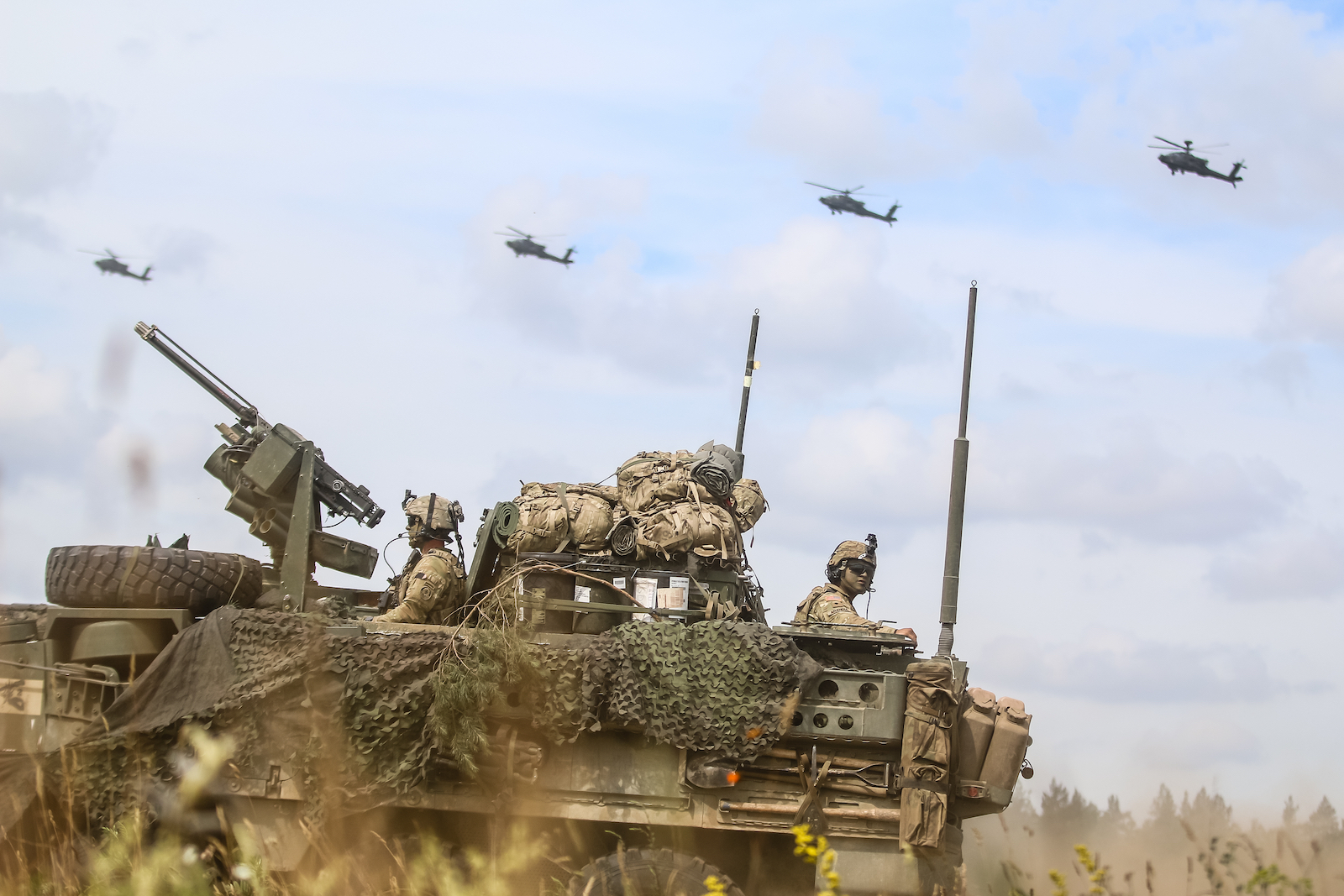
Examining the Democratic Peace Hypothesis: A Neorealist Critique
“Only the dead have seen the end of war.” – George Santayana
Referred to as the “closest thing we have to law in international relations,” the democratic peace theory – the idea that democratic states do not go to war against each other – has been used as a champion ideology during the latter half of the post-World War II era and into the new millennium. For the theory’s mostly Western advocates, it is believed that as democracy is spread to all corners of the globe, so shall peace. The seemingly unanimous explanation among liberal international relations theorists for such a Kantian principle has been that democratic states avoid conflict with each other because of the similar natures of the democratic processes and the shared values within liberal societies that constrain the states’ leaders from conflict escalation.
Since the time of Cleisthenes and the ancient Athenians, the very method of democratization has been dynamic. That is to say, the process is always one of transformation – moving from a so-called undemocratic society to a free one; from an irresponsible government to one in which the leaders are responsible for the well-being of the citizenry; from weak and absent civil societies to active and vibrant civic organizations. Proponents of the theory posit that it is this transformation in which cultural values are established over time and, ultimately, institutions are created, that prevents dyadic conflict between democratic states.
In his seminal work on the democratic peace, Bruce Russett develops two models of explanation. First, the “cultural/normative model” asserts that the norms of peaceful conflict resolution – such as rule of law – inherent in democratic states lead these societies to avoid dyadic conflict with their counterparts.
It is through this concept of shared culture, norms, and ideas that war is made unthinkable. Second, the “structural/institutional model” suggests that checks and balances, a dispersion of power, and a need for public debate and majority support makes it more difficult for democratic states to escalate disagreements to a point in which peaceful resolution is impossible.
The dissolution of the Soviet Union in the early 1990s seemed to indicate to liberal intellectuals, such as Russett and others within American academia, that the superiority of the Western system had prevented the Cold War from escalating to the point of no return. In a twist of Karl Marx’s historical determinism, Francis Fukuyama pre-emptively dubbed this era “the end of history,” arguing that the world had moved to a stage in which liberal democracy was seen as the only legitimate form of government. “What we may be witnessing is not just the end of the Cold War, or the passing of a particular period of post-war history, but the end of history as such: that is, the end point of mankind’s ideological evolution and the universalization of Western liberal democracy as the final form of human government.”
This Wilsonian pronouncement has been used as a foreign policy doctrine for successive post-Cold War American leaders, such as Bill Clinton, who stated in his 1994 State of the Union address that, “Ultimately, the best strategy to ensure our security and to build a durable peace is to support the advance of democracy elsewhere. Democracies don’t attack each other.”
Flaws of the Democratic Peace Theory
Even for a society unwavering in its messianic role in foreign affairs, the doctrinal implication for a theory which stands antithetical to history is alarming. During his eight years in office, Bill Clinton overextended the American military into regions of the world which were more concerned with settling centuries’ old ethnic rivalries than the future of their domestic political institutions. His successor, George W. Bush, used the theory as the primary justification for the war in Iraq, stating, “The reason why I’m so strong on democracy is democracies don’t go to war with each other…I’ve got great faith in democracies to promote peace. And that’s why I’m such a strong believer that the way forward in the Middle East, the broader Middle East, is to promote democracy.”
At the time of writing, President Barack Obama’s foreign policy doctrines have not become anymore measured than his immediate predecessors with regards to what is geopolitically imperative, and what is too costly for the current economic constraints. American self-perceptions notwithstanding, all nation-states have acted in the interest of ensuring their own survival first and foremost, while paying little regard to another’s culture, norms, ideals, or institutions in pursuit of its ends. Diplomatic ententes and military groupings – from the Holy Alliance to NATO – have shifted to fit the realities of the current system and will continue to do so when the national interest is at stake. As such, the democratic peace hypothesis presents three substantial problems for the current Westphalian international model.
The first flaw in the theory is one of conceptualization. The Polity Index, used by Russet in his examination of the democratic peace, is based on a faulty definition of democracy. In 1971, Yale University Professor, Robert Dahl, posited two very basic attributes of the system: competition and participation. The first state that granted full participation by way of universal suffrage and, as a consequence, met Dahl’s requirements for a democratic society, was Finland in 1906. While the Polity Index measures the spread of democracy from the year 1800 onwards, the data omits participation as a key attribute in its determination of democratic states. By omitting such a basic, yet vital, component of democracy and failing to properly conceptualize democracy, the very question of what it means to be a democratic state, bent on avoiding dyadic conflict, is called into question.
Despite this conceptual flaw, most states listed as democratic by Russett and the Polity I-IV data do, in fact, promote universal suffrage (at least in theory) in the twenty-first century and would meet Dahl’s 1971 requirements (though Russett’s blanket assertion and inclusion of states without universal suffrage remains a point of contention for the emerging democracies). With this in mind, the second error in the logic of the democratic peace theory is with Russett’s “cultural/normative” model. The model assumes that a culture of peace is the standard across all democratic societies. While few would disagree that a Western liberal state such as the Netherlands is more peaceful than the various war-torn countries that comprise the very undemocratic societies of sub-Saharan Africa, the same comparison cannot be made between all democratic and autocratic societies.
Studying the post-World War II era, in which numerous former colonies gained their independence and empires were systematically disbanded, one will find that the emerging democracies during this era, struggling with the formation of civil society structures and the demands posed by the market economy, had substantially higher crime rates than the ardently non-democratic societies. In addition, homicide rates for so-called “full democracies” – that is, states with a long-established history of democracy (e.g. Western Europe and the United States) – increased at an alarmingly higher rate than their non-democratic counterparts during this same time period. To use a specific example, the world’s current hegemon and most powerful democracy, the United States, regularly experiences violent civil unrest, has the tenth highest homicide rate per 100,000 people (just behind the Republic of Moldova and ahead of Uruguay), and experienced a violent civil war that claimed the lives of 650,000 Americans just a century and a half ago.
Moreover, if democratic decision-makers did actually employ their society’s supposed culture of peace into their policy formation when faced with international conflict escalation, they would do so at all stages and in all instances, including when faced with a hostile challenge from a non-democratic state. History, however, shows that is not the case. During the years 1899-1999, five of the world’s current most powerful (expressed in terms of military potential; determined using quantitative troop, aircraft, and nuclear arms levels) democracies – the United States, India, the United Kingdom, France, and Israel – engaged in interstate conflict on no less than twenty-five occasions. Furthermore, in twenty-nine of the recent intrastate conflicts, twenty-three of the prevailing regimes were either democratic throughout the dispute or at certain times during the dispute. Such realities call into question the assertion that democratic societies have a culture of peace that pervades decision-making.
The third and final logical flaw of the democratic peace is that the theory itself is a myth, as democracies have gone to war with each other numerous times throughout history when it was in their interest to do so or when their sovereignty was threatened by another. From the time of the Greek wars of the 5th and 4th centuries BCE, there have been at least 14 conflicts involving states that would be listed in the “democratic” category of the Polity I-IV indexes. When one alters the already contentious definition of “war,” the number of conflicts increases to at least twenty-three and includes such international disputes as the long-running American-Indian War of the 19th century (the Iroquois tribe had a complex but recognizable system of democracy), the 1923 occupation of the Ruhr by the French, and the Allied (British) bombings of Finland during the Second World War. By using the very same conceptualizations that Bruce Russett and other liberal theorists use to categorize democracies, one is able to determine that their very argument – that democratic states never go to war with one another – is simply wrong.
The Continuance of Raison d’état
Since it is possible to prove by careful examination that democratic states lack the so-called “culture of peace” emanating from the transformative process of the system and that the democratic peace hypothesis is not valid beyond that which is examined on the surface, the only possible logical conclusion is that democratic states have engaged in conflict with each other less frequently than they have with non-democracies simply because doing so usually runs counter to the ultimate national interest of survival. From 1945-1990, approximately thirty-two countries were democratic (amounting to roughly thirty-one percent of the world’s population). With the notable exception of the non-aligned countries, most were allied with the United States and its policy of containment with regards to the Soviet Union and the spread of communism.
Therefore, the national interests of these democratic states were aligned and they avoided war because of this fact; having similar political processes was inconsequential. In the post-Cold War era, although there have arguably been three democratic wars (the Croatian War of Independence, the Fourth India-Pakistan War, and the 2006 Israel-Lebanon War), most liberal democratic states have benefited from the status quo and free trade, not expansionist war, dictates the national interest.
As the “Arab Spring” continues to rage in Syria, and as the new self-proclaimed democratic states of Egypt and Libya continue to shape their futures, the number of conflicts between democratic societies will undoubtedly increase from its current number. For decision-makers and leaders of prior-established liberal democracies, it is imperative to recognize the faults and failings of the democratic peace hypothesis and to act only in accordance with what is in the interest of the state’s survival and its relative/absolute gains. Employing a doctrine of democracy promotion without acting as a rational actor who engages in a thorough cost-benefit analysis is both irresponsible and dangerous.

